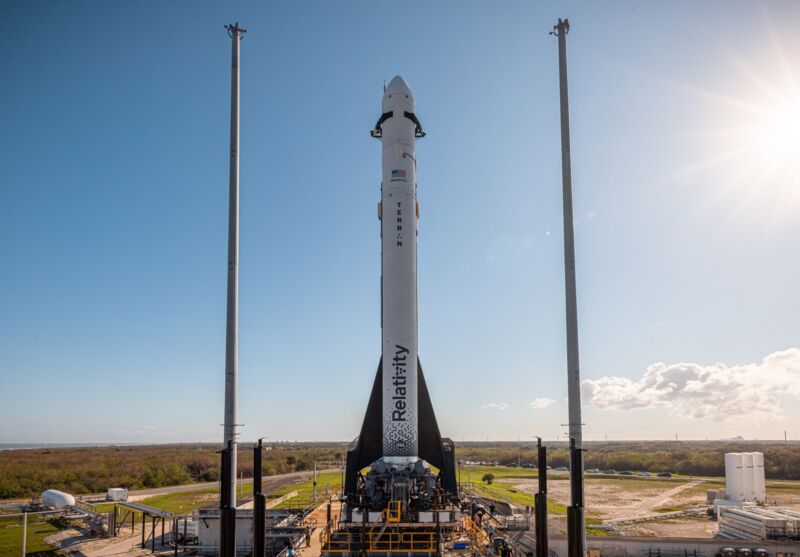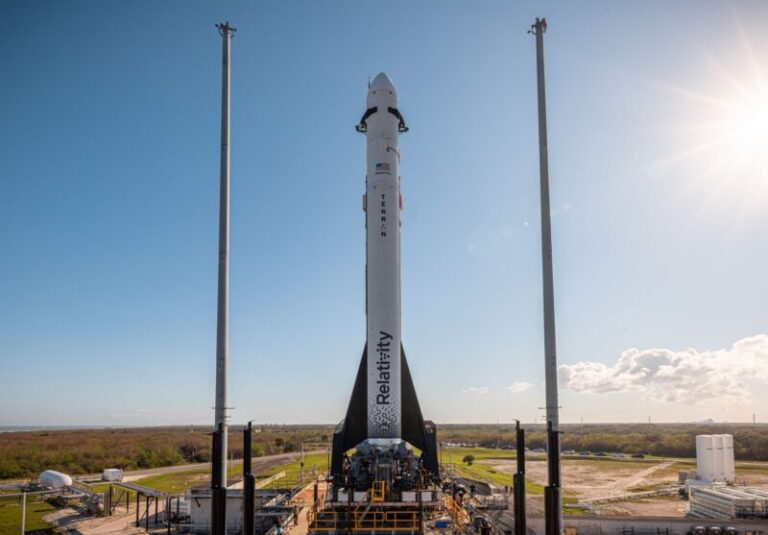
Relativity Space/Trevor Mahlmann
Relativity Space, the ambitious company that aims to make most of its rockets additively, will try again to make the debut launch of its Terran 1 vehicle on Wednesday night from Florida.
The California-based company has a three-hour launch window that opens at 10 pm local time at the Cape Canaveral Space Force Station (02:00 UTC on Thursday). The current forecast for the launch attempt is very good, with a 95 percent chance of acceptable conditions, according to US Space Force officials who operate the range.
If recent history is any guide, Wednesday’s launch attempt could consume most of the three-hour window. Relativity’s first attempt to launch Terran 1, on March 8, was scrubbed near the end of the window due to problems with a fuel-temperature sensor on the second stage. A second attempt three days later was unable to get off the ground due to a range of issues, including a last-second abort, weather concerns, and a boat in the sheltered area around the launch site.
Now, the company is hoping the third time will be the charm for the debut flight of its rocket, which is made up of about 85 percent 3D-printed parts by mass. Eventually, the company wants to additively manufacture up to 95 percent of its rockets, although this may be more aspirational than realizable.
This is purely a test flight. Named “Good Luck, Have Fun,” the launch will carry no customer payloads. Accordingly, overall success—reaching orbit—is unlikely. No private company has launched its first independently developed, liquid-fueled rocket and reached orbit on the first try. And Relativity is pushing a lot of boundaries with its methane-fueled booster. Perhaps the biggest test here is whether Terran 1’s 3D-printed structure can withstand the dynamic pressure of climbing into a lower atmosphere.
The Terran 1 booster is about 33 meters tall and is advertised as being able to lift 1.25 metric tons into low-Earth orbit. However, there are questions about how many times Terran 1 will actually be launched. In an interview, Relativity Space chief executive Tim Ellis only committed to one more flight of Terran 1 before the company pivots to a more large, medium-lift launch vehicle called Terran R.
To its credit, Relativity is providing a livestream of its debut launch, something startup companies don’t do all that often for fear of publicly failing. And since there may not be too many more Terran 1 launches—it wouldn’t surprise me if there were only one—those interested in the new rockets will probably want to tune in for the show.
Terran 1, launch attempt no. 3.

